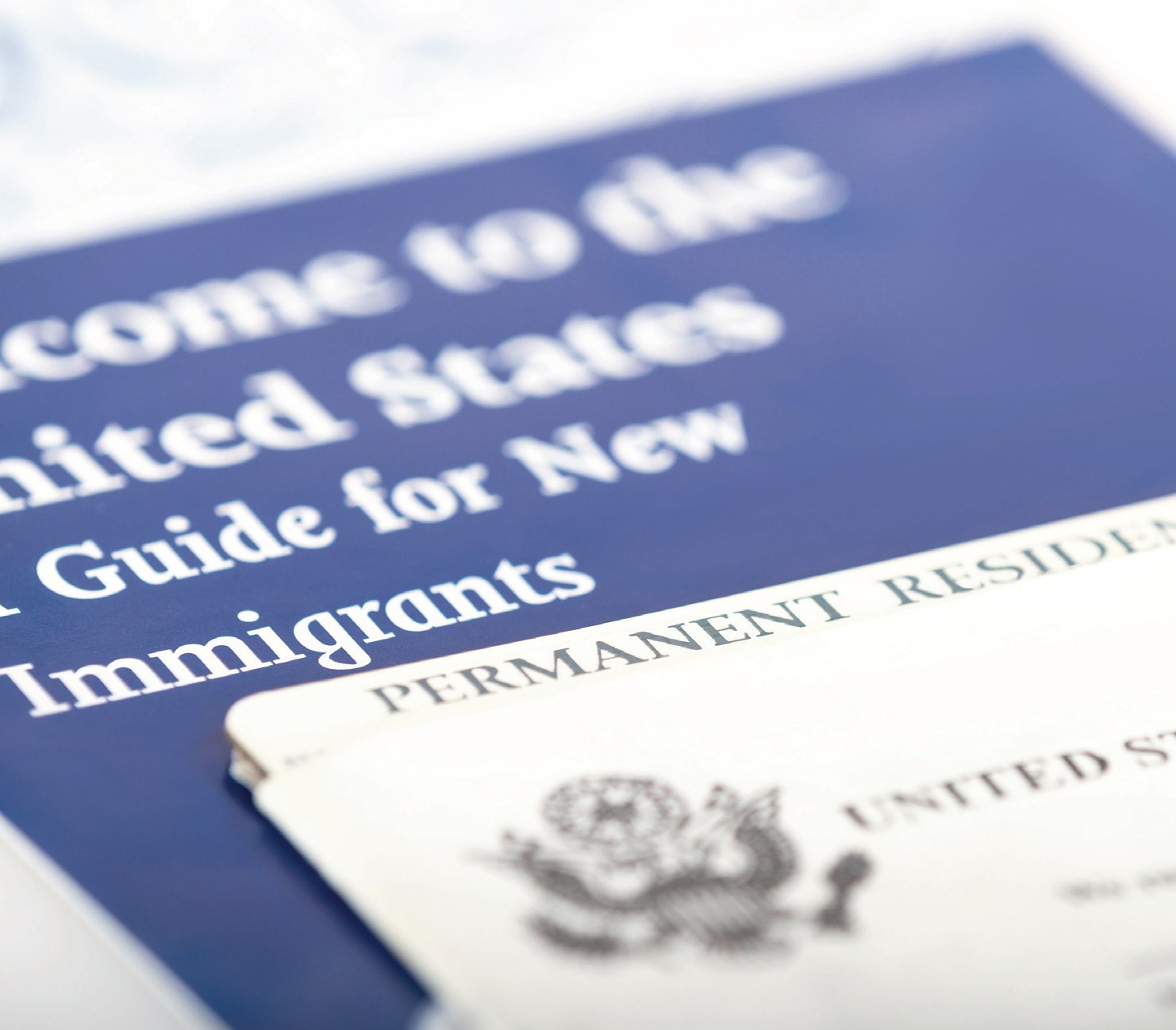United States of America permanent resident card STOCK PHOTO
By the end of the century, the U.S. population will be declining without substantial immigration, older adults will outnumber children and white, nonHispanic residents will account for less than 50% of the population, according to projections released Thursday by the U.S. Census Bureau.
The population projections offer a glimpse of what the nation may look like at the turn of the next century, though a forecast decades into the future can`t predict the unexpected like a global pandemic.
The projections can help the U.S. prepare for change, from anticipating the demands of health care for seniors to providing insight into the number of schools that need to be built over the coming decades, said Paul Ong, a public affairs professor at UCLA.
"As most demographers realize, population projection is not an inevitable destiny, just a glimpse into a possible future," Ong said. "Seeing that possibility also opens up opportunities for action.“ Population changes due to births and deaths, which are more predictable, and immigration, which is more uncertain. Because of that, the Census Bureau offers three different projections through 2100 based on high, medium and low immigration.
Under the low-immigration scenario, the U.S. population shrinks to 319 million people by 2100 from the current population of 333 million residents. It grows to 365 million people at the end of the century under the medium immigration scenario and to 435 million residents with high immigration. In each immigration scenario, the country is on track to become older and more diverse.
Americans of college age and younger are already part of a majority-minority cohort.
Aliana Mediratta, a 20-year-old student at Washington University in St. Louis, welcomes a future with a more diverse population and believes immigration "is great for our society and our economy."
But that optimism is tempered by existential worries that things seem to be getting worse, including climate change and gun violence.
"I feel like I have to be optimistic about the future since, if I`m pessimistic, it disables me from doing things that I want to do, that are hard, but morally right to do," Mediratta said.
Here`s a look at how the U.S. population is expected to change through 2100, using the medium immigration scenario.
2020s
By 2029, older adults will outnumber children, with 71 million U.S. residents aged 65 and older and 69 million residents under age 18.
The numeric superiority of seniors will mean fewer workers. Combined with children, they`ll represent 40% of the population. Only around 60% of the population that is of working age __ between 18 and 64 – will be paying the bulk of taxes for Social Security and Medicare.
2030s
“Natural increase“ in the U.S. will go negative in 2038, meaning deaths outpacing births due to an aging population and declines in fertility. The Census projects 13,000 more deaths than births in the U.S., and that shortfall grows to 1.2 million more deaths than births by 2100. 2050s
By 2050, the share of the U.S. population that is white and not Hispanic will be under 50% for the first time.
Currently, 58.9% of U.S. residents are white and not Hispanic. By 2050, Hispanic residents will account for a quarter of the U.S. population, up from 19.1% today. African Americans will make up 14.4% of the population, up from 13.6% currently. Asians will account for 8.6% of the population, up from 6.2% today.
Also in the 2050s, Asians will surpass Hispanics as the largest group of immigrants by race or ethnicity.
2060s
The increasing diversity of the nation will be most noticeable in children. By the 2060s, non-Hispanic white children will be a third of the population under age 18, compared to under half currently.
2080s
Under that medium immigration scenario, the U.S. population peaks at more than 369 million residents in 2081. After that, the Census Bureau predicts a slight population decline, with deaths outpacing births and immigration.
2090s
By the end of the 2090s, the foreign population will make up almost 19.5% of U.S. residents, the highest share since the Census Bureau started keeping track in1850. The highest rate previously was 14.8% in 1890. It currently is 13.9%.
FOREIGN BORN AND IMMIGRATION
Experts say that predicting immigration trends is more difficult than in the past when migration was tightly linked to the pull of economic opportunity in the U.S.
When immigration is instead driven by the push of climate change, social tensions exacerbated by authoritarian rulers and gangs, as well as fluctuating anti-immigrant sentiment in the U.S., it is harder to predict, said Manuel Pastor, a professor of sociology and American Studies & Ethnicity at the University of Southern California.
"In the past we would say we get immigration from economics, and you can make some reasonable projections," Pastor said. "Now, we have these push pressures for people to come to the U.S., and we have a further racialized reaction to migration, we have a much wider band or error, or the potential to make mistakes. "
RELIABILITY
How reliable will the numbers be, especially as race and ethnic definitions change, and immigration levels are hard to predict?
While there is an extreme level of uncertainty projecting almost eight decades into the future, it is a good starting point, said Ong, the UCLA professor.
"Over 80 years, birth and death rates, fertility rates and migration rates can be changed through policies, programs and resources," Ong said.
Mediratta, the college student, imagines that 20-year-olds like her two centuries ago were also concerned about the future, but they didn’t have TikTok or Instagram to amplify their worries.
"It seems like things are bad all the time," Mediratta said. "I feel that things were probably bad all the time 200 years ago, but nobody could tell everyone about it."













No Comment